L'Orang-Outang

Le Raton Laveur

Le Renne

Le Narval ou Licorne de Mer

Le Pangolin
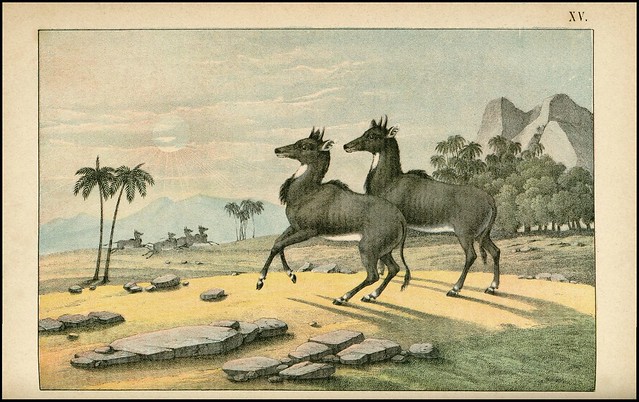
Le Nilgaut
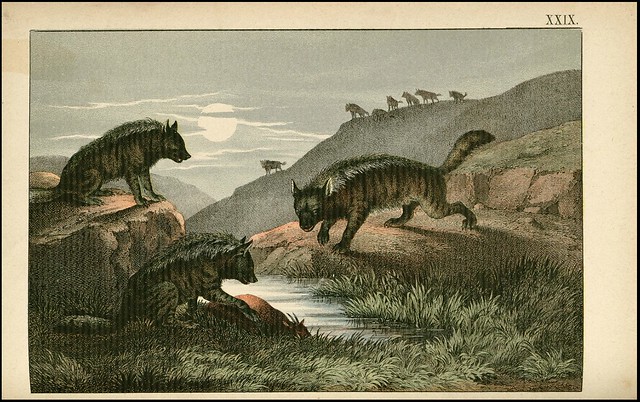
L'Hyène
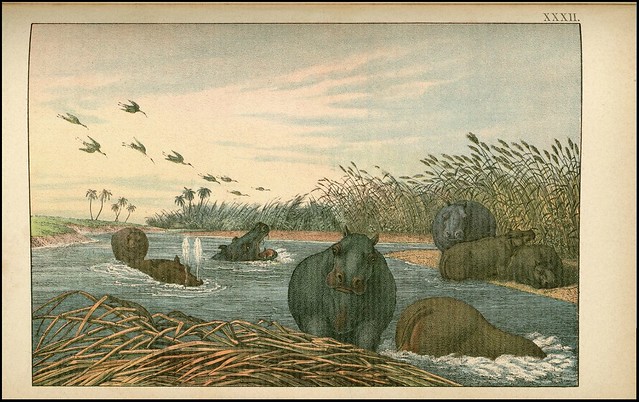
L'Hippopotame
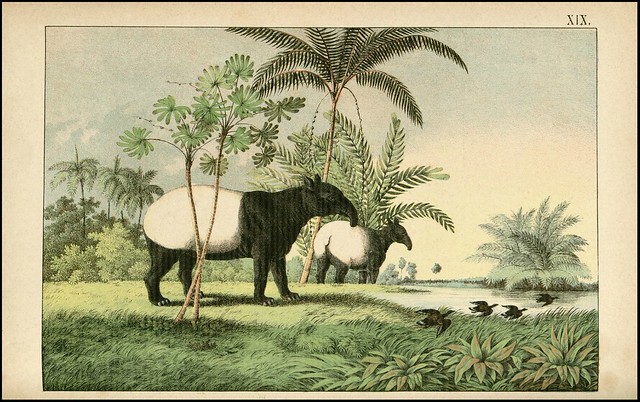
Le Tapir de l'Inde

Le Chiroptère ou Vampire de Java
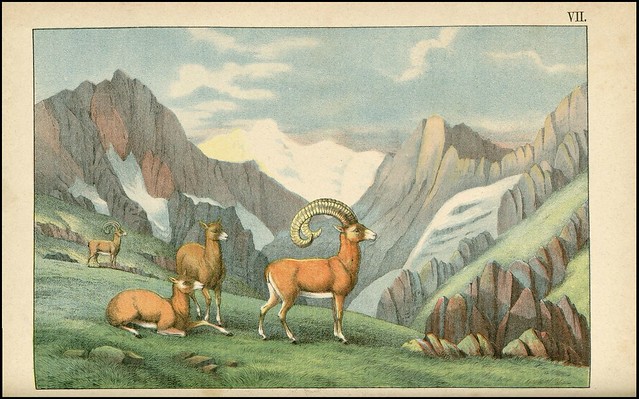
Le Mouflon

Le Cachalot
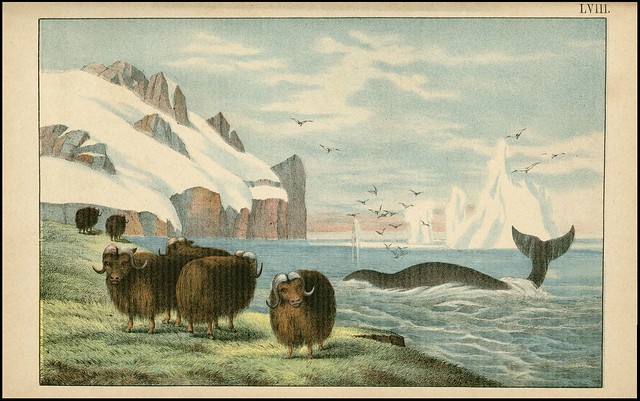
Le Bœuf Musqué & La Baleine Commune
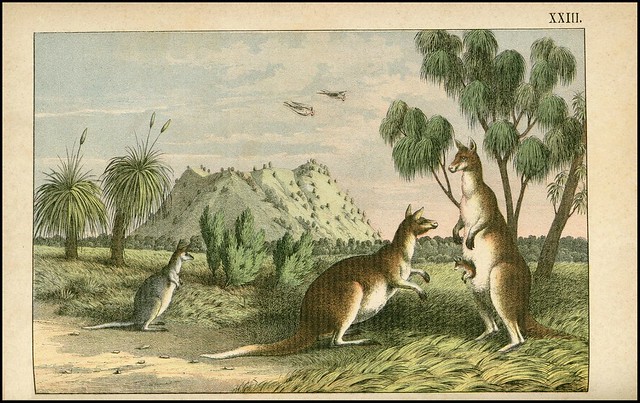
Le Kanguroo Géant et le Kanguroo-Lièvre

Le Tigre-Loup & le Woombat
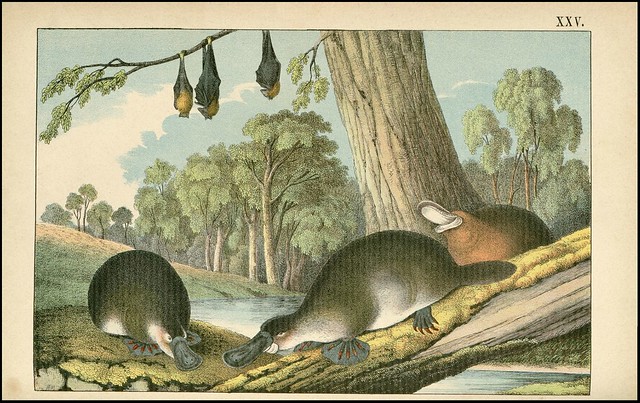
L'Ornithorhynque
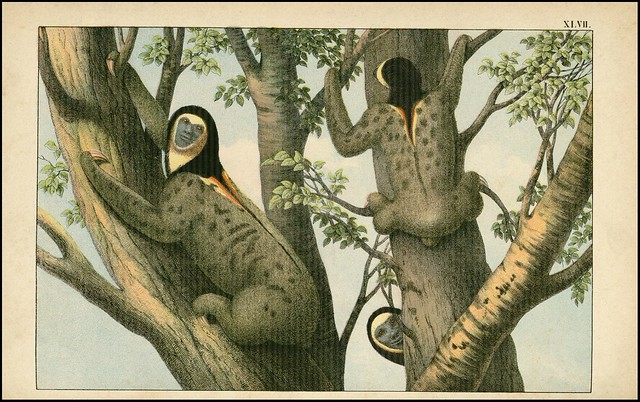
Le Paresseux
'Atlas d'Histoire Naturelle : Scènes de la Vie des Animaux' {A. Ract & Co. Editors} undated but say, 1875, is online via la Bibliothèque des Sciences et de l'Industrie (BSI) in Paris.
[The portal: La Médiathèque à Paris au cœur de la Cité des Sciences et de l'Industrie]
The sixty chromolithographs of animals are grouped together in the book according to their geographical location and continent (unlike the random display above). The illustrations are fairly accurate and naturalistic for the most part, if we overlook the absurd faces on the monkeys. That's a feature more usually associated with natural history books from a century earlier, but it's unlikely that these coloured lithographs were produced before about 1850.
Chromolithographs were often made -as here- to look like they were hand-coloured engravings, presumably to boost their renown and value. I had thought it might be as a result of the hand-painting being more labour intensive and therefore more costly to produce, but the early lithographic printing in colour required a new stone for each colour making it an exhaustive and difficult process.
"Even though chromolithographs served many uses within society at the time, many were opposed to the idea of them because of their lack of authenticity. The new forms of art were sometimes tagged as "bad art" because of their deceptive qualities. Some also felt that it could not serve as a form of art at all since it was too mechanical, and that the true spirit of a painter could never be captured in a printed version of a work. Over time, chromos were made so cheaply that they could no longer be confused with original paintings. Since production costs were low, the fabrication of chromolithographs became more a business than the creation of art." [W]Neil from Idbury Prints informs me that the 'striped' appearance in many of the pictures is due to the quality of the digital photography. The illustrations were printed on laid paper which has an embedded striated pattern caused during the paper's unique production technique that is being recorded during digitisation. It would hardly be noticeable with the naked eye.
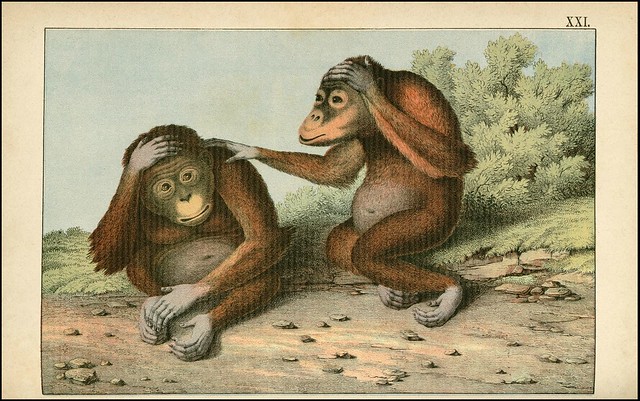



















2 comments :
They're lovely images, and the muted colours work very well. I like how one hippopotamus appears to be looking quizzically at the artist. (A musk ox has the same expression, reversed.)
There's a centuries-old illustrative style expressed in those quizzical stares you mention, as well as in the embellished renderings of the monkey faces. I'm not sure whether it's from a belief in the animals possessing souls like humans or if it's simply an artistic habit of portraying their subjects as having greater or more attractive character than they do in reality. (Occam's razor says it's about $$ and increased sales I suppose)
It brings to mind - although not necessarily in the stares - a concept I see as the 'distance law of artistic absurdity' at play : the more obscure or exotic the animal (and thus the further away in distance from a book's publication city), the greater was the poetic license of absurdity in the drawing of the animals's characteristics. So we get apes with semi-human faces and animals staring back at the viewer as though finding us totally absorbing and interesting. It goes back to the manuscript days of course.
Post a Comment
Comments are all moderated so don't waste your time spamming: they will never show up.
If you include ANY links that aren't pertinent to the blog post or discussion they will be deleted and a rash will break out in your underwear.
Also: please play the ball and not the person.
Note: only a member of this blog may post a comment.